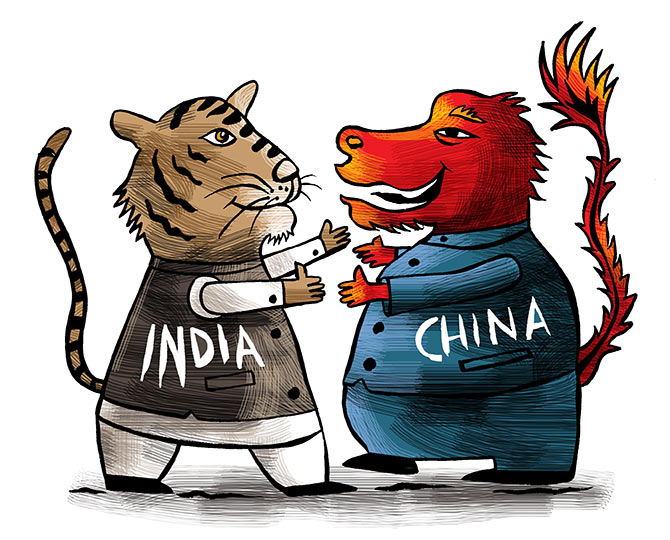
India, China likely to drive half of 2023 global growth, says IMF
January 31, 2023The International Monetary Fund (IMF) has said India and China will account for half of the global economic growth in 2023, as the multilateral agency retained its growth forecast for Asia’s third-largest economy for 2023-24 (FY24).
“India remains a bright spot. Together with China, it will account for half of global growth this year, versus just a tenth for the US and euro area combined,” the IMF said in its latest update to the biannual World Economic Outlook.
Growth in India is set to decline from 6.8 per cent in 2022 (FY23) to 6.1 per cent in 2023 (FY24) before picking up to 6.8 per cent in 2024 (FY25), the global lender said while citing “resilient domestic demand despite external headwinds”.
The Washington-based multilateral lender raised its global growth forecast for 2023 by 20 basis points to 2.9 per cent, holding that the balance of risks remained tilted to the downside, but adverse risks had moderated since its October 2022 report.
“Economic growth proved surprisingly resilient in the third quarter of last year, with strong labour markets, robust household consumption and business investment, and better-than-expected adaptation to the energy crisis in Europe,” IMF Chief Economist Pierre-Olivier Gourinchas wrote in a blog post.
“Elsewhere, China’s sudden re-opening paves the way for a rapid rebound in activity.
“And global financial conditions have improved as inflation pressures started to abate.
“This, and a weakening of the US dollar from its November high, provided some modest relief to emerging and developing countries,” he noted.
The US economy grew at a robust 2.9 per cent in the December quarter, surprising analysts.
Among major economies, only the United Kingdom is projected to fall into recession (-0.6 per cent) in 2023, while growth in Germany (0.1 per cent) and Russia (0.3 per cent) may remain flat.
“On the upside, a stronger boost from pent-up demand in numerous economies or a faster fall in inflation is plausible.
“On the downside, severe health outcomes in China could hold back the recovery, Russia’s war in Ukraine could escalate, and tighter global financing conditions could worsen debt distress.
“Financial markets could also suddenly reprice in response to adverse inflation news, while further geopolitical fragmentation could hamper economic progress,” it said.
IDFC First Bank on Monday projected the Indian economy to grow at 5.8 per cent in FY24.
“Growth conditions in India have proven to be resilient despite external headwinds, led by urban consumption and nascent signs of capex cycle recovery.
“Listed company results indicate improvement in profits in Q3FY23, reflecting moderation in input cost pressures.
“Improvement in the capex cycle is indicated by capital goods production and capital goods imports,” it added.
The IMF said global inflation is expected to decline in 2023 but even by 2024, projected average annual headline and core inflation would still be above pre-pandemic levels in more than 80 per cent of countries.
Gourinchas said where inflation pressures remain too elevated, central banks need to raise real policy rates above the neutral rate and keep them there until underlying inflation is on a decisive declining path.
“Easing too early risks undoing all the gains achieved so far.
“Emerging market economies should let their currencies adjust as much as possible in response to the tighter global monetary conditions.
“Where appropriate, foreign exchange interventions or capital flow measures can help smooth volatility that’s excessive or not related to economic fundamentals,” he said.
Source: Read Full Article



